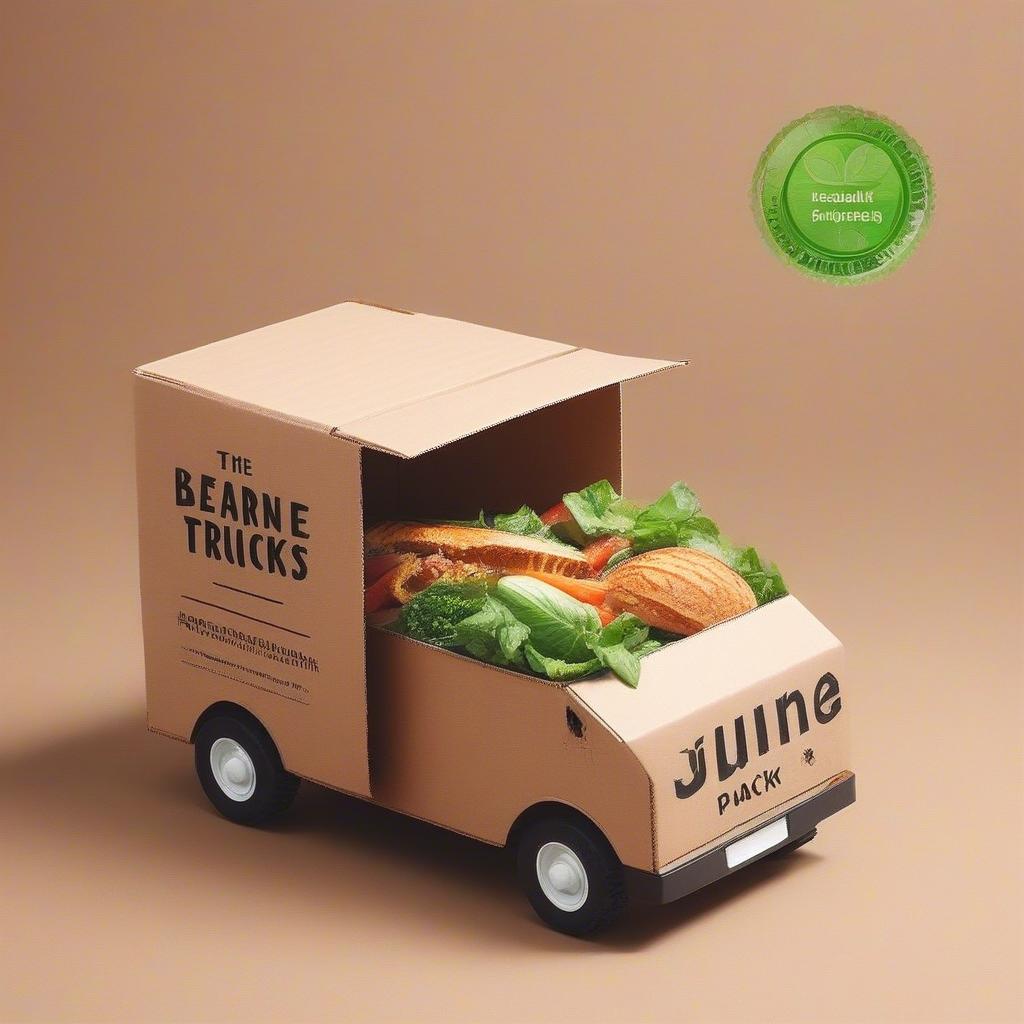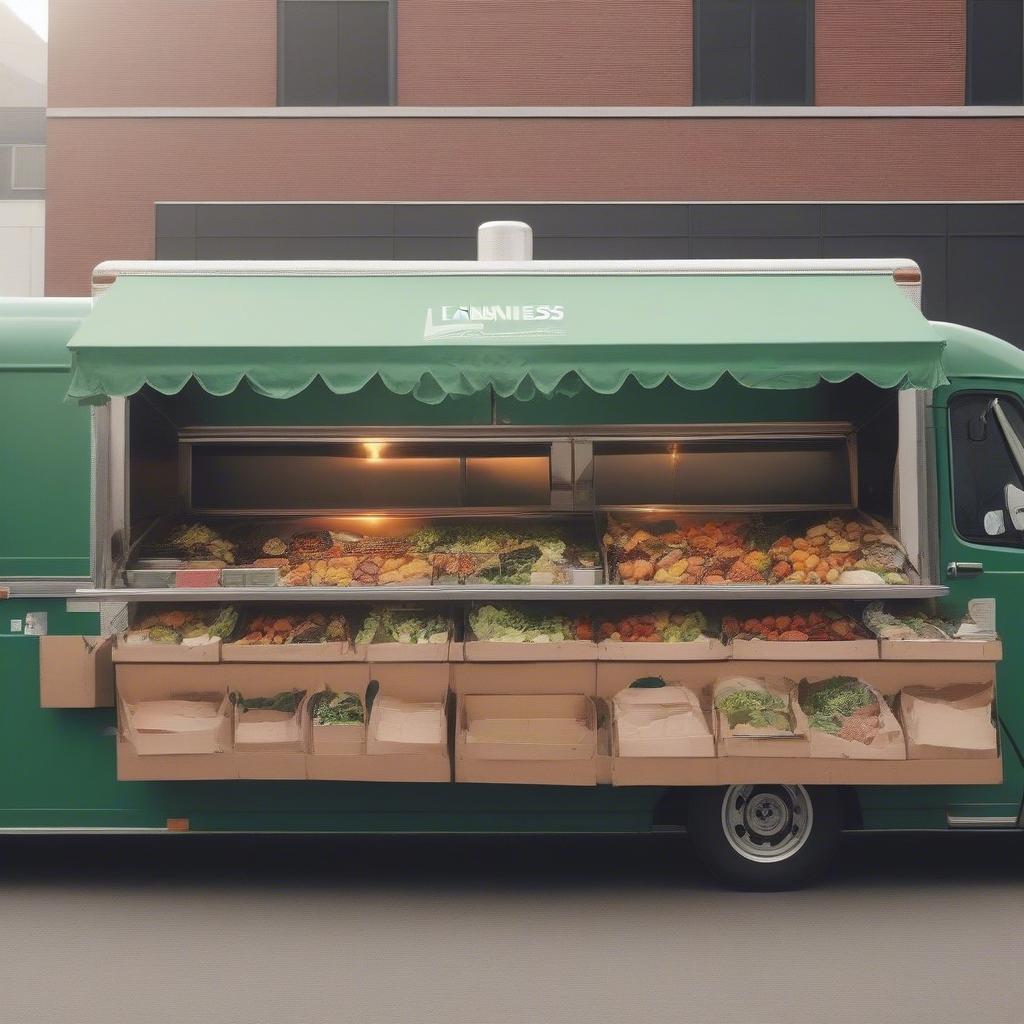
Best Tools for Managing Food Truck Finances
Running a food truck is a dream for many – the freedom of the open road, the satisfaction of serving delicious food, and the thrill of being your own boss. But beneath the sizzle and the smiles lies a crucial element: finances. Managing your money effectively is the key to a thriving food truck business. Without it, your culinary dreams could quickly turn into a financial nightmare. That’s why having the right finance tools at your disposal is non-negotiable. This article will guide you through the essential tools and strategies to conquer the complexities of food truck management and budgeting, ensuring your road to success is paved with smart financial decisions.
Why is Tracking Food Truck Finances So Important?
Before diving into the tools, let’s understand why diligent financial tracking is so crucial. It’s more than just balancing the books; it’s about making informed decisions that directly impact your food truck’s survival and growth.
Understanding Your Profitability
Knowing exactly how much money you’re making (or losing) is the cornerstone of any successful business. Are you truly profitable? Or are you unknowingly hemorrhaging money? Detailed financial tracking, using effective budgeting tools, reveals your actual profit margins, allowing you to pinpoint areas for improvement.
Making Informed Decisions
Should you invest in a new piece of equipment? Is a specific location worth the associated costs? Can you afford to hire an extra hand? Financial data provides the concrete information you need to make sound decisions, rather than relying on gut feelings or guesswork. The right finance tools will make this process a lot easier.
Staying Compliant with Taxes
Tax time can be a headache for any business owner, and food trucks are no exception. Accurate record-keeping, facilitated by suitable food truck management tools, will make filing your taxes much easier, preventing costly errors and penalties. It helps you identify potential deductions and ensures you’re paying the correct amount of taxes.
Securing Funding and Investors
If you plan to expand or seek investment, having a clear and organized financial history is vital. Potential lenders or investors will want to see solid proof of your business’s financial health, and proper finance tools that generate reports are essential to present a professional image.
Essential Tools for Managing Food Truck Finances
Now that you understand the "why," let’s dive into the "what." Here’s a comprehensive look at the tools you’ll need to manage your food truck’s finances effectively:
1. Point of Sale (POS) Systems
A modern POS system is no longer a luxury; it’s a necessity for any food truck. It serves as the central hub for managing your sales, inventory, and customer interactions.
Why You Need a POS System:
- Streamlined Transactions: Accept credit cards, mobile payments, and cash efficiently.
- Sales Tracking: Monitor your daily, weekly, and monthly sales in real-time.
- Inventory Management: Keep track of your ingredients and supplies, reducing wastage and preventing shortages.
- Customer Data: Collect customer information for marketing purposes.
- Reporting: Generate insightful reports that help you analyze sales trends, popular items, and peak hours.
Features to Look For:
- Offline Mode: Crucial for locations with limited or unreliable internet.
- Mobile Functionality: Should work seamlessly on tablets or smartphones.
- Integration with Accounting Software: Syncs sales data automatically, saving time and reducing errors.
- User-Friendly Interface: Easy for you and your staff to learn and use.
- Inventory Tracking: Real-time updates on stock levels and automatic reordering features.
Popular POS Systems for Food Trucks:
- Square: A popular choice for its user-friendliness, affordability, and robust features.
- Toast: Geared towards restaurants and food service, offering advanced features like table management.
- Clover: Known for its flexible hardware and diverse app ecosystem.
Pro Tip: Always choose a POS system that aligns with your specific needs and budget. Trial different options before committing to one.
2. Accounting Software
While a POS system manages transactions, accounting software is where you manage your overall finances, from tracking expenses to preparing taxes. Using the right budgeting tools is a game-changer.
Why You Need Accounting Software:
- Track Income and Expenses: Categorize all financial transactions for better analysis.
- Invoice Management: Generate professional invoices for catering or wholesale orders.
- Financial Reporting: Create balance sheets, income statements, and cash flow reports.
- Tax Preparation: Easily compile the necessary information for tax filing.
- Bank Reconciliation: Match your bank statements to your financial records.
Features to Look For:
- Cloud-Based: Access your data from anywhere with an internet connection.
- Mobile Accessibility: Manage your finances on the go.
- Integration with POS Systems: Seamlessly import sales data.
- User-Friendly Interface: Simple to use even for those with limited accounting knowledge.
- Scalability: Able to handle the growth of your business.
Popular Accounting Software for Food Trucks:
- QuickBooks Online: The industry standard, offering a range of plans for different business needs.
- Xero: A user-friendly option known for its ease of use and robust features.
- Zoho Books: Affordable and offers a suite of business apps.
Pro Tip: Choose accounting software that allows for easy categorization of your expenses, such as food costs, supplies, fuel, and maintenance.
3. Budgeting Spreadsheets and Templates
Even with sophisticated software, a good old-fashioned spreadsheet can be invaluable. It can serve as a quick and flexible tool for creating and tracking your food truck management budget.
Why You Need Budgeting Spreadsheets:
- Detailed Planning: Create specific budgets for different areas of your business.
- Expense Tracking: Manually input and categorize your expenses for analysis.
- Profit Forecasting: Estimate your income and expenses to project profitability.
- Cash Flow Management: Monitor the flow of money in and out of your business.
- Flexibility: Customize your spreadsheets to fit your unique needs.
Creating Effective Budgeting Spreadsheets:
- Fixed Costs: List costs that don’t change month to month, such as rent, loan payments, and insurance.
- Variable Costs: Include costs that fluctuate, such as food, fuel, and supplies.
- Income Projections: Estimate your expected sales based on historical data and anticipated demand.
- Regular Review: Update your spreadsheets monthly to see how actual figures compare to your projections.
Spreadsheet Templates:
- Profit and Loss Template: Track your income and expenses to calculate your profit margins.
- Cash Flow Template: Monitor the flow of money in and out of your business, identifying potential cash flow issues.
- Break-Even Analysis Template: Calculate the sales volume required to cover your total costs.
Pro Tip: Use spreadsheets in conjunction with accounting software to gain a more comprehensive view of your business’s financial health. Download pre-made templates online or create your own for a tailored solution.
4. Inventory Management Tools
Proper inventory management is critical in the food truck business, where spoilage and waste can quickly eat into your profits. Efficient food truck management involves knowing what you have, when to order it, and how much you need.
Why You Need Inventory Management Tools:
- Reduce Waste: Minimize spoilage by tracking expiration dates and optimizing stock levels.
- Control Costs: Avoid over-ordering and tie up cash in unnecessary inventory.
- Prevent Shortages: Ensure you always have the ingredients you need to serve your customers.
- Improve Efficiency: Streamline the ordering process and save time.
- Identify Trends: Understand which items are popular and which ones to reduce ordering.
Inventory Management Methods:
- First-In, First-Out (FIFO): Use the oldest items first to prevent spoilage.
- Regular Inventory Counts: Conduct regular counts of your inventory to ensure accuracy.
- Tracking Software: Use dedicated inventory management software or features within your POS system to track stock levels, set reorder points, and manage orders.
Popular Inventory Management Tools:
- Katana: Offers robust inventory tracking, order management, and production scheduling.
- Simple Order: Specifically designed for food businesses, simplifying purchase orders and supplier communication.
- Partender: Ideal for tracking drink and bar inventory if your menu includes those.
Pro Tip: Choose an inventory management method and tools that align with the size and complexity of your operation. Keep records organized and regularly reconcile inventory counts.
5. Mobile Payment Systems
Accepting various payment methods is essential for a modern food truck business. Mobile payment systems are a convenient way for customers to pay and for you to manage transactions.
Why You Need Mobile Payment Systems:
- Convenience: Accept payments from various sources.
- Faster Transactions: Speed up checkout lines with contactless payments.
- Increased Sales: Customers are more likely to buy if they have multiple payment options.
- Reduced Cash Handling: Minimize the risk of errors and theft.
- Better Tracking: Integrate payments into your POS system.
Popular Mobile Payment Options:
- Apple Pay: A popular option for iPhone users.
- Google Pay: Widely used by Android users.
- Venmo and PayPal: Great for peer-to-peer transactions, useful for receiving large catering order payments.
Pro Tip: Make sure your POS system can integrate with your preferred mobile payment solutions for seamless transactions.
6. Mileage Tracking Apps
If you’re constantly on the move, mileage tracking apps are essential for tracking your business-related travel expenses. This is a crucial part of your food truck management approach that should not be overlooked.
Why You Need a Mileage Tracking App:
- Claim Tax Deductions: Accurately track your business-related mileage to claim tax deductions.
- Accurate Record Keeping: Automatically log your trips without manual input.
- Organized Records: Keep all your mileage records in one place, for easy access at tax time.
Popular Mileage Tracking Apps:
- Everlance: Automatically tracks mileage and categorizes trips.
- MileIQ: Tracks mileage and classifies it as personal or business.
- Stride: Tracks mileage and also estimates tax deductions.
Pro Tip: Choose a mileage tracking app that automatically records your trips and offers seamless integration with your accounting software.
7. Time Tracking Software
If you employ staff, using time-tracking software helps ensure you are complying with labor laws and paying employees correctly. It also gives insight into hours worked, helping you optimize scheduling.
Why You Need Time Tracking Software:
- Accurate Payroll: Ensures accurate calculation of employee hours and overtime.
- Compliance with Labor Laws: Helps comply with regulations and avoid costly penalties.
- Improved Productivity: Provides insights into employee attendance and work patterns.
- Time Savings: Automates time-tracking processes, reducing administrative work.
Features to Look For:
- Mobile Time Tracking: Allows employees to clock in and out on mobile devices.
- Geofencing: Ensures employees are only clocking in when at the work location.
- Reporting: Generates reports on employee hours and payroll costs.
- Integration with Payroll Software: Syncs data with your payroll system for smooth pay runs.
Popular Time Tracking Software for Food Trucks:
- Homebase: Ideal for small businesses, offering free basic time tracking and scheduling features.
- TSheets: Feature-rich, suitable for businesses with complex payroll requirements.
- When I Work: Integrates scheduling with time tracking.
Pro Tip: Look for a time tracking solution that allows for easy clock-in/clock-out and has integration with your payroll system to save time.
Step-by-Step Guide to Setting Up Your Financial System
Now that you’re familiar with the essential tools, let’s look at how to implement them step by step:
- Choose a POS System: Research and select a POS system that fits your budget and needs. Implement this before your grand opening and learn the features.
- Set Up Accounting Software: Choose accounting software that can track your income and expenses easily and integrate with your POS system.
- Create a Budget Spreadsheet: Set up a detailed budget template that categorizes your fixed and variable costs. Use these as part of your budgeting tools.
- Implement Inventory Tracking: Decide on a suitable inventory management method and incorporate it with your POS system or dedicated software.
- Integrate Mobile Payment Options: Set up mobile payment systems to cater to customer preferences.
- Start Mileage Tracking: Download a mileage tracking app and start logging your business trips.
- Implement Time Tracking: If applicable, choose time tracking software that suits your needs and integrate it into your HR management.
- Regularly Reconcile and Review: On a monthly basis, check your bank statements and POS system against your accounting software to ensure all transactions are accounted for. Review your financial performance to identify areas to optimize your business.
Learn Business: Your Partner in Financial Success
As you navigate the world of food truck finances, you don’t have to go it alone. At Learn Business, we understand the challenges and complexities that come with operating a small business, especially in the competitive food service sector. We’re committed to supporting businesses by providing guidance, templates, and resources tailored specifically to your needs.
How Learn Business Can Help Your Food Truck
- Customizable Templates: Access downloadable food truck management budget templates, profit and loss templates, cash flow trackers, and more, designed specifically for food trucks to give you a good starting point.
- Financial Planning Guidance: Gain expert insights into financial best practices tailored to your food truck business.
- One-on-One Consulting: Access personalized coaching to help you navigate challenges and achieve your financial goals.
- Access to Expert Advice: Learn from experts in business management, accounting, marketing, and more.
- Community Support: Connect with other food truck owners, sharing valuable tips and tricks.
- Free Resources: Take advantage of our library of articles, videos, and e-books covering a wide range of business topics.
How Learn Business Supports Small Businesses
At Learn Business, we’re passionate about empowering small businesses like yours. We believe that with the right knowledge and support, any entrepreneur can achieve success. Our tools and resources are designed to equip you with the knowledge and confidence you need to thrive.
Start Your Financial Journey Today
Managing your food truck finances might seem daunting at first. However, with the right tools, knowledge, and support, you can establish a solid financial foundation for your business and create a sustainable pathway to growth and success. Don’t let financial worries stall your culinary dreams!
Take charge of your finances and let your food truck thrive! With tools like the best POS system, accounting software, budgeting tools, and inventory management options, you have all the essentials to achieve your financial goals. Remember, smart financial management is not just about tracking numbers; it’s about understanding your business’s story and guiding it toward prosperity. And with Learn Business by your side, you’ll be equipped with knowledge and resources to make informed decisions every step of the way.



Leave a Reply